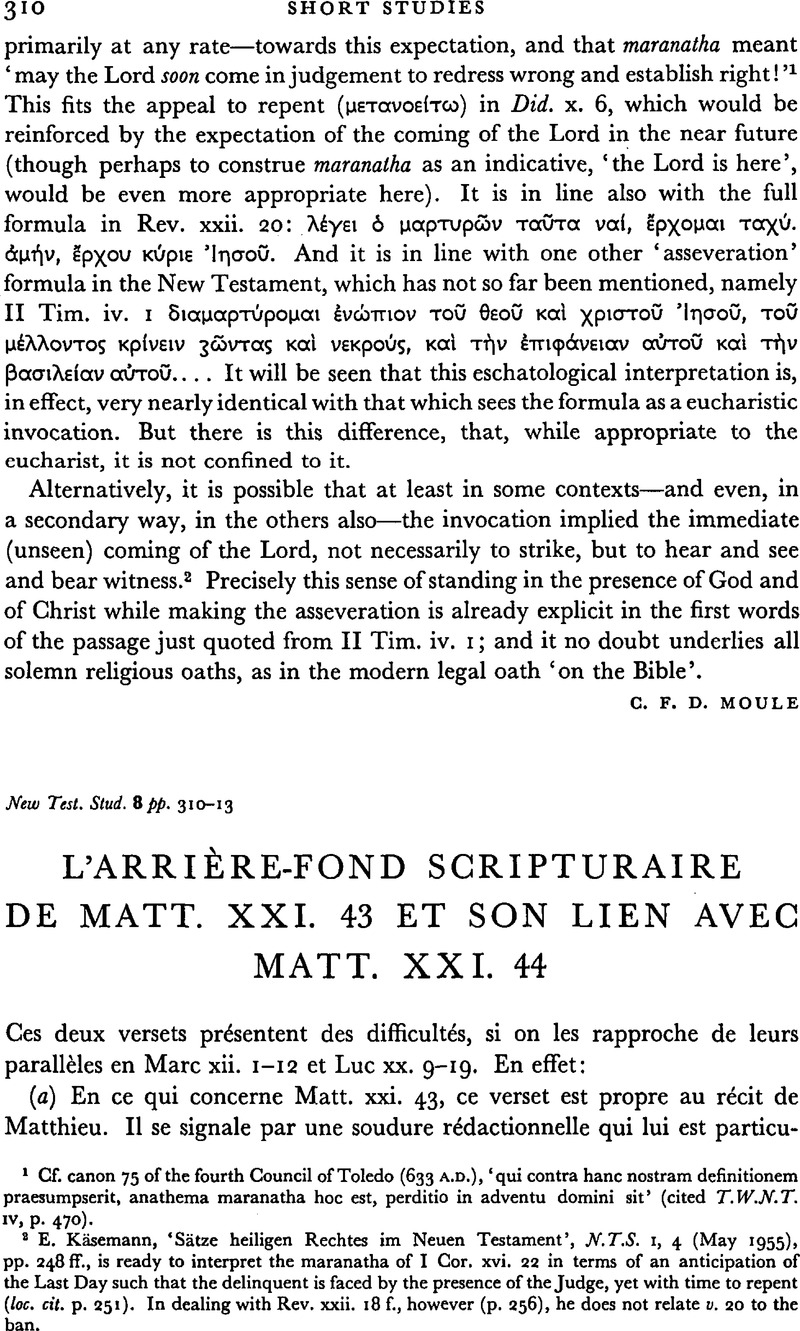Published online by Cambridge University Press: 05 February 2009

page 310 note 1 Cf. canon 75 of the fourth Council of Toledo (633 A.D.), ‘qui contra hanc nostram definitionem praesumpserit, anathema maranatha hoc est, perditio in adventu domini sit’ (cited T. W.N. T. IV, p. 470).
page 310 note 2 Käsemann, E., ‘Sätze heiligen Rechtes im Neuen Testament’, N.T.S. 1, 4 (May 1955), pp. 248 ff., is ready to interpret the maranatha of I Cor. xvi. 22 in terms of an anticipation of the Last Day such that the delinquent is faced by the presence of the Judge, yet with time to repent (loc. cit. p. 251). In dealing with Rev. xxii. 18 f., however (p. 256), he does not relate v. 20 to the ban.Google Scholar
page 311 note 1 L., Vaganay, Le Problème Synoptique (Tournai, 1954), pp.448–9, souligne combien la situation de ces quatre passages at différente du point de vue des sources: xii. 28 appartient à la double tradition, Sg; xix. 24 dépend de la triple tradition, Mg; xxi. 31b est un passage propre à Matthieu; xxi. 43 appartient è la triple tradition, mais comme une donnée propre à Matthieu.Google Scholar
page 311 note 2 Cerfaux, Voir L., ‘La Connaissance des secrets du Royaume d'aprés Matt. xiii et paralléles’, N.T.S. II (mai 1956), 244.Google Scholar